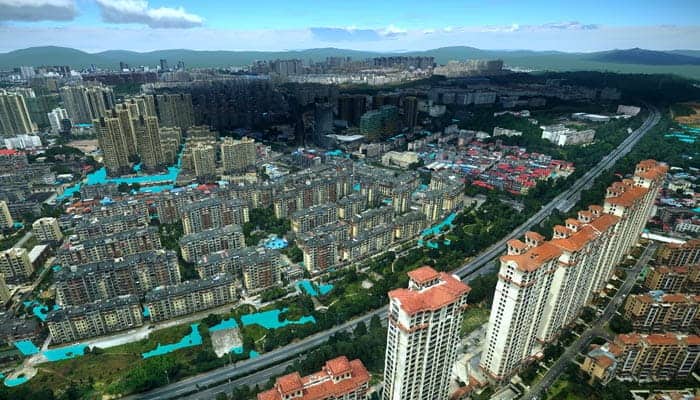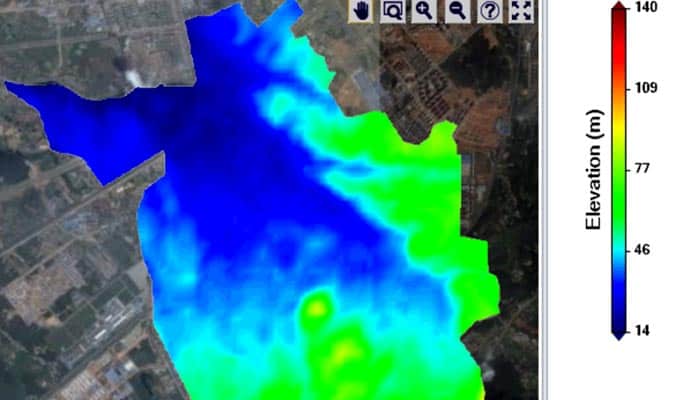Determining How to Prevent Flooding in an Urban Area
Shanghai Investigation, Design & Research Institute Co., Ltd.
Construction of An Urban Stormwater and Flood Management Platform
SIDRI eliminated flooding and waterlogging problems in Jiujiang, Jiangxi, China by creating a CNY 8 billion hydraulic analysis system.
Key Project Details
- Project: Construction of Urban Stormwater and Flood Management Platform
- Infrastructure Delivered: A city-scale 3D reality and hydrodynamic model
- Owner: China Three Gorges Corporation
- Lead Engineers: Shanghai Investigation, Design & Research Institute Co., Ltd.
- Completion Date: 2021

SIDRI created a reality model that incorporates detailed hydraulic information and enables them to determine the impact of numerous what-if scenarios.

With the information gained from the models, city officials can improve water flow, protect residents, and prepare the city for future weather-related events.
Impact of Severe Flood Events Led Impetus for Change
In 2020, significant flooding along the Yangtze River killed 141 people and displaced 38 million more. For the city of Jiujiang, the disaster was the latest in a string of overflow and waterlogging incidents caused by accelerated urbanization, and officials initially could not determine how to prevent them. To better prepare for future flooding events and minimize disruption to city life, China Three Gorges Corporation directed Shanghai Investigation, Design & Research Institute (SIDRI) to create a hydraulic analysis system that can simulate a variety of water conditions in the city. However, they lacked adequate data for the current state of the flood control and drainage system.
Seeking More Detailed Data
To provide the information, the hydraulic analysis system would need to clearly display detailed data, plan flood control tasks, and pinpoint emergency events. Frequently updated hydraulic data needed to be easily accessible to shorten the time needed to dispatch emergency services. SIDRI determined they had to create a reality model to provide them with crucial information. However, the technological leap would require software that could also move beyond traditional hydraulic modeling methods and incorporate Internet of Things data, providing the insight necessary to determine how to reduce flooding risk.
Linking Hydraulic Models within a Reality Model
SIDRI determined they could create a reality model that could support all the city’s flood prevention goals with Bentley applications. They first captured images and created a reality model of the 21 square-kilometer area with ContextCapture. Within that model, they used OpenFlows FLOOD and OpenFlows SewerGEMS to create and link one-dimensional and two-dimensional hydrodynamic models. With IoT sensors, the models can provide real-time calculations. Lastly, they integrated the 3D reality model into the hydrodynamic models with LumenRT for dynamic animation of flooding events.
Improving Emergency Response with Real-time Data
With the ability to predict potential waterlogging, officials can now identify and address critical drainage problems in advance. Real-time data overlaid onto the reality model allows the city to make emergency responses to flooding in a timely manner. The intuitive and accurate analysis has helped the city to optimize their emergency response plan and determine the type of infrastructure they need to improve water flow, protect residents, and prepare the city for future weather-related events.
The Impact
Contributing to sustainable and resilient infrastructure, and to progress on the U.N. Sustainable Development Goals:
- Address critical drainage problems to prevent flooding.
- Improve water flow and prepare the city for future weather-related events.
